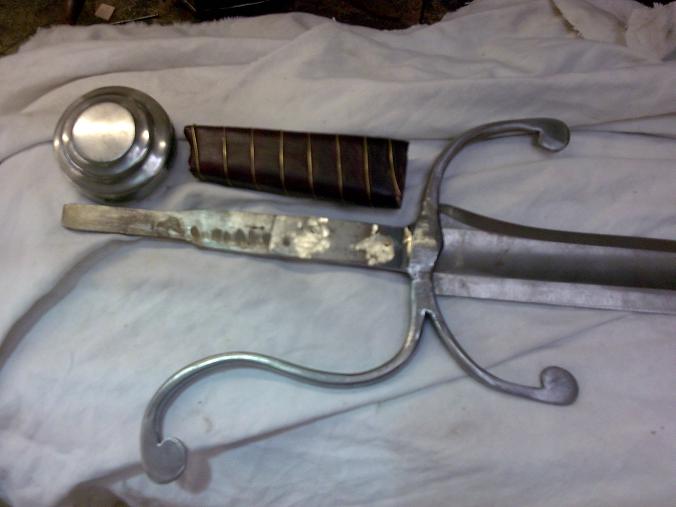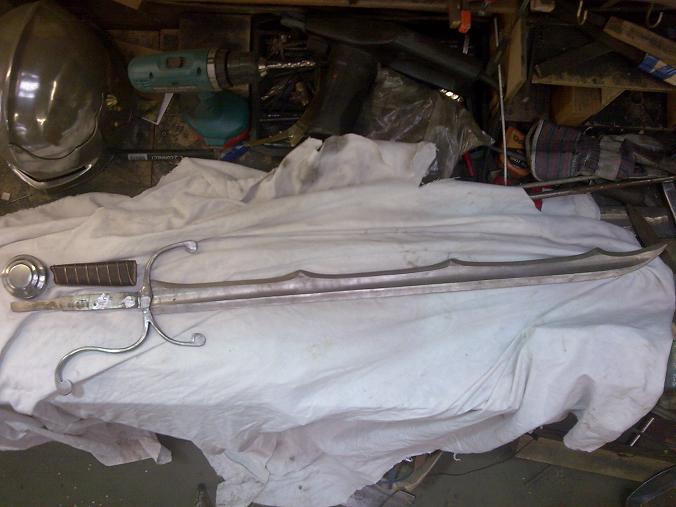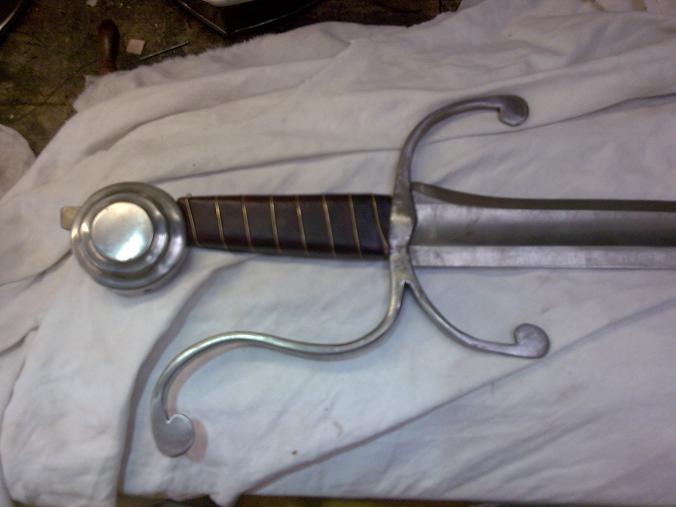Posts: 27 Location: Sheffield/Nottingham Midlands
Wed 09 Jun, 2010 10:02 am
hello all.
I'm really pleased to have some feedback! :)
Peter,
I don't take any offence to your opinion regarding my pommels. I just prefer to see that something has been handcrafted and not just simply turned on a metal lathe which is all too common. I have read that wheel pommels were constructed in a sense of 'crimping' a bar from the forge with a punch around until it was in the desired shape then ground.
I got this from
Oakeshott's book the 'Medieval sword' . I much prefer to construct my pommels in this way so people can see/understand that its been constructed using the eye of the craftsman and not an 'industrial' machine.
There have been times where I have made more than 3 attempts even 4 attempts wasting a days even weeks on parts for my products throwing them away and starting again until i feel confident in what i have done. I'm very passionate about my work. Though i must admit a true craftsman will always understand that his work isn't perfect and if he does I wouldn't call him a craftsmen.I hope that makes sense.
I intended upon constructing the solid metal grip as you have described and according to the original, though i decided to make the alteration to use wood and leather to make the balance better. I'm now pushing myself to take your advice around the 'birds head' type of reasoning behind the Storta. I seen and armourer construct the Storta in the same way as i have using wood and leather with an offset pommel. Iv learned alot from your reply and much appreciate it.
Being only 21 i have alot to learn, though people will never stop learning :)




